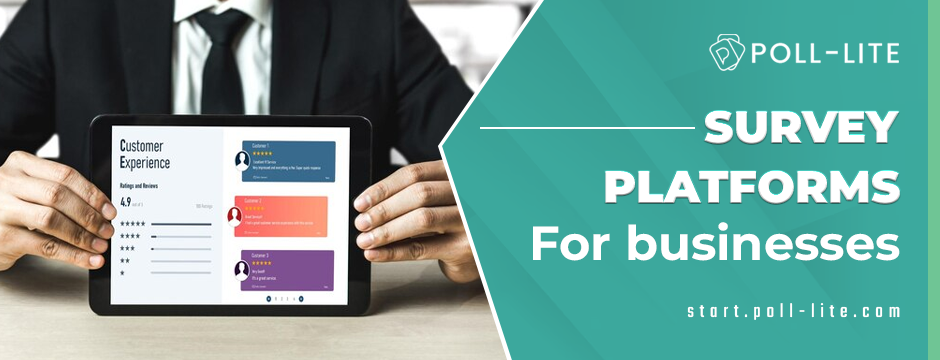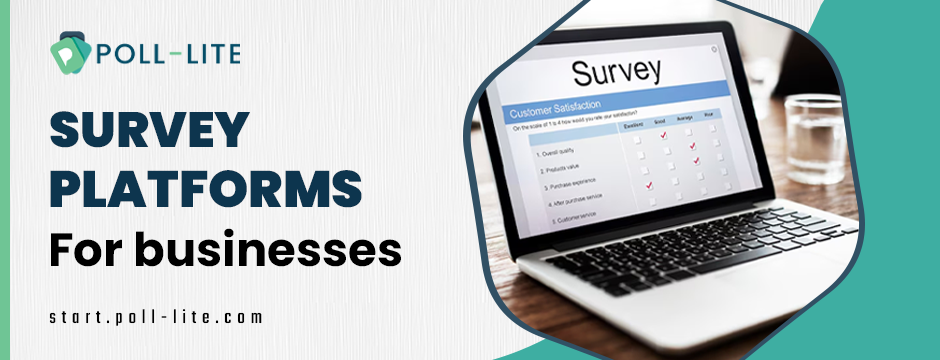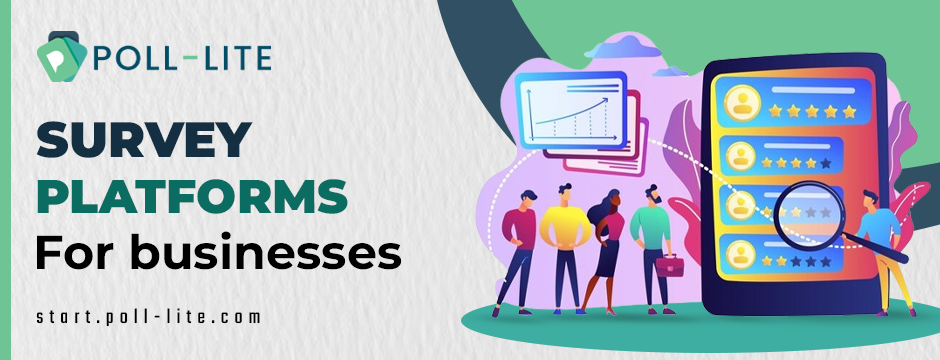Employee management is becoming more and more crucial than ever, in today’s fast-paced business field. Employees that are engaged are more creative, productive, and dedicated to the success of their company. However, understanding what drives engagement and how to sustain it can be challenging. That is the situation when a business needs Survey Platforms for Businesses. By using these tools, businesses can gather valuable insights into their workforce, identify areas for improvement, and create a workplace culture that fosters engagement and growth.
Understanding Employee Engagement
What is Employee Engagement?
Workers’ emotional participation and devotion to their company is referred to as employee engagement. Engaged employees are motivated to contribute to the company’s goals, feel a strong sense of loyalty, and are more likely to go above and beyond in their roles. Engagement is not just about job satisfaction; it’s about how connected employees feel to their work, their colleagues, and the organization’s mission.
Why is Employee Engagement Important?
The importance of employee engagement cannot be overstated. Engaged employees are more productive, leading to higher levels of efficiency and output. They are also more likely to stay with the company, reducing turnover rates and the associated costs of hiring and training new staff. Moreover, a highly engaged workforce can drive innovation, enhance customer satisfaction, and contribute to a positive workplace culture.
The Role of Survey Platforms in Employee Engagement
How Survey Platforms Work
Survey platforms are digital tools that allow organizations to create, distribute, and analyze surveys. These platforms can be customized to suit the specific needs of a business, enabling them to collect data on various aspects of employee engagement. The data collected can then be analyzed to identify trends, pinpoint areas for improvement, and develop strategies to enhance engagement.
Benefits of Using Survey Platforms
Survey Platforms for Businesses offer several advantages over traditional methods of gathering employee feedback. First, they are efficient and scalable, allowing businesses to reach a large number of employees quickly. Second, they provide anonymity, encouraging employees to be honest and open in their responses. Third, these platforms often come with built-in analytics tools, making it easier to interpret the data and take action based on the findings.

Types of Surveys to Measure Employee Engagement
1. Employee Engagement Surveys
Employee engagement surveys are designed to assess the overall level of engagement within an organization. These surveys typically cover topics such as job satisfaction, alignment with company values, relationships with colleagues and supervisors, and opportunities for growth and development. By regularly conducting engagement surveys, businesses can track changes over time and measure the effectiveness of their engagement strategies.
2. Pulse Surveys
Pulse surveys are shorter, more frequent surveys that focus on specific aspects of employee engagement. These surveys are often used to gather real-time feedback on issues such as workplace morale, communication, or recent changes within the organization. Pulse surveys are a valuable tool for identifying emerging issues and addressing them before they escalate.
3. Onboarding and Exit Surveys
Onboarding surveys are conducted with new employees to understand their initial experiences with the company. These surveys can provide insights into the effectiveness of the onboarding process and identify areas where new hires may need additional support. Exit surveys, on the other hand, are used to gather feedback from employees who are leaving the organization. This information can help businesses understand why employees are leaving and what they can do to improve retention.
4. 360-Degree Feedback Surveys
360-degree feedback surveys involve collecting feedback from an employee’s peers, subordinates, and supervisors. An all-encompassing viewpoint on an employee’s performance and potential growth areas is offered by this comprehensive method. For engagement purposes, 360-degree feedback can highlight how well employees are collaborating with their teams and contributing to a positive workplace culture.
Best Practices for Implementing Survey Platforms
1. Set Clear Objectives
Clearly defining the objectives of a survey is crucial before beginning it. What are the intended outcomes of the survey? Are you looking to measure overall engagement, identify specific pain points, or gather feedback on a particular initiative? Having clear objectives will guide the design of the survey and ensure that the data collected is actionable.
2. Keep Surveys Short and Focused
One of the keys to maximizing participation in surveys is to keep them short and focused. Long surveys can be overwhelming and may lead to survey fatigue, resulting in incomplete responses or low participation rates. Focus on the most critical questions that will provide the insights you need to improve engagement.
3. Ensure Anonymity and Confidentiality
To encourage honest feedback, it’s important to ensure that survey responses are anonymous and confidential. Employees are more likely to share their true feelings and opinions if they know their responses cannot be traced back to them. Be transparent about how the data will be used and reassure employees that their privacy will be respected.
4. Communicate the Purpose and Benefits
When rolling out a survey, communicate the purpose of the survey and how the results will benefit the employees. Explain that the survey is an opportunity for them to voice their opinions and contribute to positive changes within the organization. Highlighting the potential benefits can increase participation and demonstrate that the company values employee feedback.
5. Act on the Results
Collecting feedback is only the first step; taking action based on the results is where the real impact lies. After analyzing the survey data, share the findings with employees and outline the steps the company will take to address any issues. This transparency builds trust and shows employees that their feedback is valued and taken seriously.
Using Survey Data to Improve Workplace Culture

1. Identifying Areas for Improvement
Survey data can provide valuable insights into the strengths and weaknesses of your workplace culture. For example, if survey results indicate that employees feel disconnected from the company’s mission, leadership may need to focus on better communication and alignment. Similarly, if employees report feeling undervalued, initiatives to recognize and reward contributions may be necessary.
2. Enhancing Communication and Collaboration
Effective communication is a cornerstone of employee engagement. Survey data can reveal how well information flows within the organization and whether employees feel informed and connected. If communication is lacking, consider implementing regular updates, town hall meetings, or collaboration tools to improve the flow of information and foster a sense of community.
3. Fostering Professional Development
One of the main factors influencing employee engagement is growth and development opportunities. Survey data can help identify gaps in professional development programs or areas where employees feel they need more support. By investing in training, mentorship, and career development, businesses can enhance employee satisfaction and engagement.
4. Recognizing and Rewarding Contributions
Recognition and rewards are powerful motivators for employees. Surveys can provide insights into whether employees feel appreciated for their hard work and contributions. If recognition is lacking, consider implementing formal recognition programs, such as employee of the month awards, or informal practices, like regular shout-outs in team meetings.
5. Building a Positive Work Environment
A positive work environment is essential for maintaining high levels of engagement. Survey data can highlight aspects of the workplace that may be causing stress or dissatisfaction, such as workload, work-life balance, or office dynamics. Addressing these issues and creating a supportive, inclusive, and enjoyable work environment can significantly boost employee engagement.
Conclusion
Maximizing employee engagement is a continuous process that requires a deep understanding of what drives your workforce. Survey Platforms for Businesses offer a powerful tool for gathering the insights needed to improve engagement and create a thriving workplace culture. By implementing best practices for survey design and acting on the feedback received, businesses can foster a more engaged, motivated, and productive workforce. The result is not only a happier, more loyal team but also a stronger, more successful organization.
Poll Lite revolutionizes survey creation by allowing businesses to generate modern, insightful surveys in just seconds. Simply input your survey goals, and Poll Lite’s AI will craft the perfect survey for you. Whether you’re looking to boost employee engagement or enhance workplace culture, we provide a seamless, efficient solution to gather the insights you need. Visit us now!

